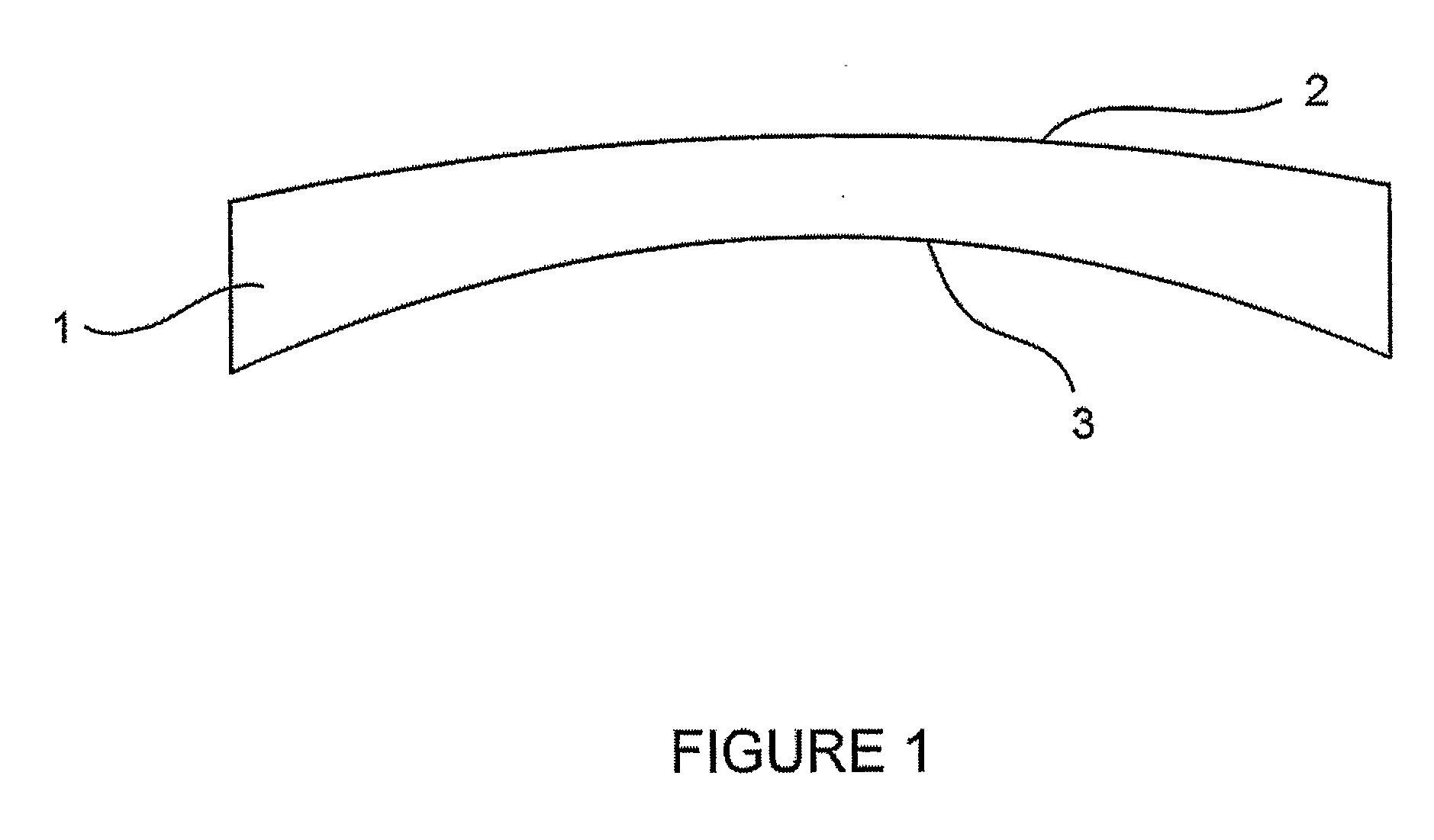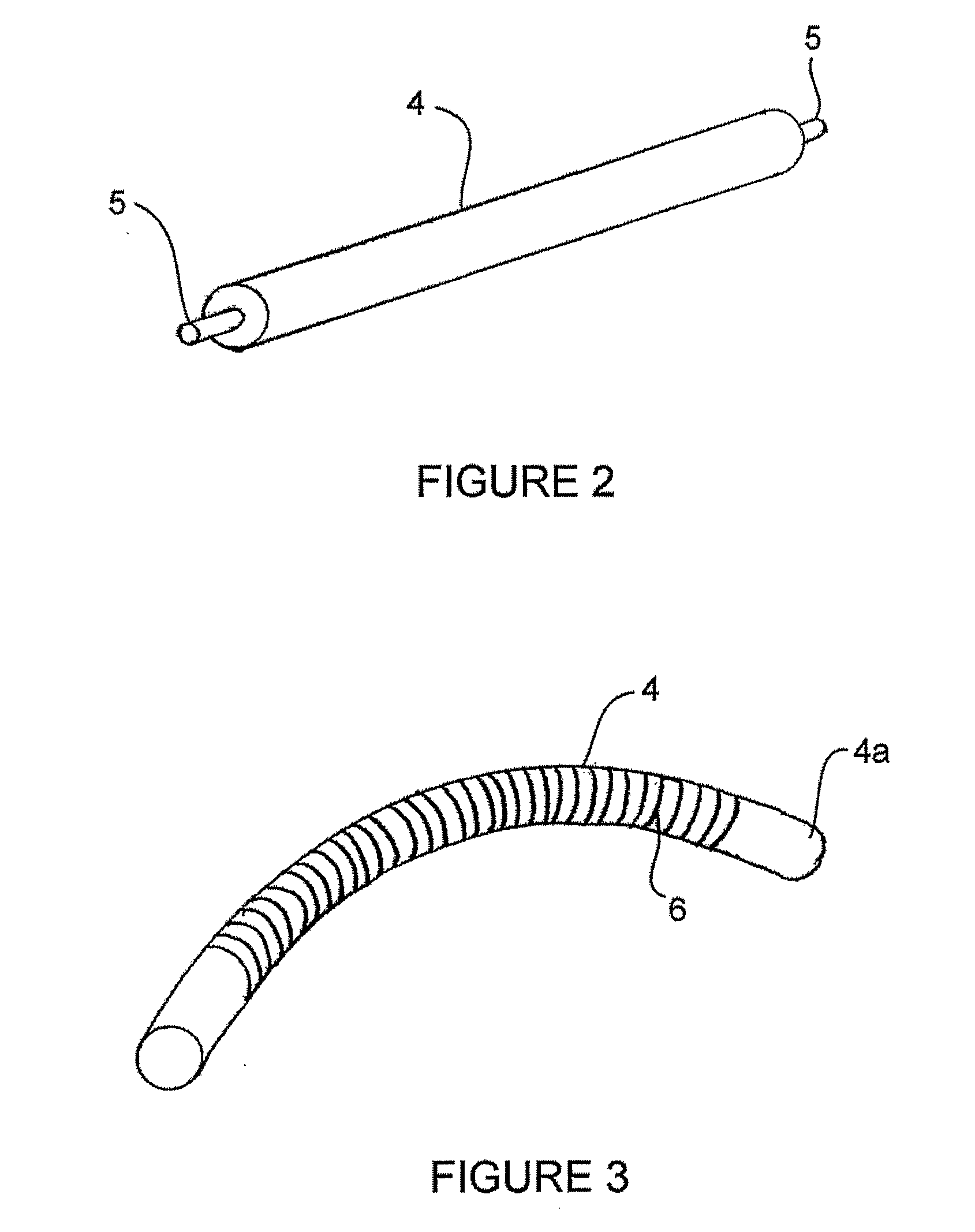Methods for coating curved surfaces with a polarizing liquid
a technology of polarizing liquid and curved surfaces, applied in the field of coating lenses, can solve the problems of increased cost, difficult to change, film-based products suffer from certain performance/technology shortcomings, etc., and achieve the effect of short tim
- Summary
- Abstract
- Description
- Claims
- Application Information
AI Technical Summary
Benefits of technology
Problems solved by technology
Method used
Image
Examples
example 1
[0102] (Materials and Methods)
[0103] Flexible Apparatus: In one embodiment of the invention, the flexible apparatus 4 can be made from plastic tubing material. Typical flexible apparatuses had a length of 170 mm of which 105 mm is wrapped with the wire 6. The tubing was wrapped with 100 micron diameter stainless steel Cobra cut Ø0, 10 mm wire from AGIECUT. The plastic tubing can be hard vacuum tubing or flexible “Tygon” tubing. The Tygon tubing used in this experiment had an overall diameter of 7 mm with a wall thickness of 1 mm. In preferred embodiments, the tubing was clear flexible tubing (tubing polyvinyl ¼OD× 3 / 16ID Parker #PV403-1).
[0104] Lens Holder: The lens holder 12 used was a 6 base aluminized hollow half-sphere. The crown of the sphere was remove so that a 6-base piano ORMA® lens would form a smooth “flush” curve.
[0105] Dye application: To permit complete coverage of the lens, the lens was placed in a holder that had a curvature to match the radius of curvature of the...
example 2
[0106]
(Results)ALIGNMENTSAMPLEDYE*METHODCONTRAST RATIO1TCF N°15.05.115Flexible rod30.64from Optiva2TCF N°15.05.115Flexible rod36.08from Optiva3TCF N°15.05.115Flexible rod25.06from Optiva4TCF N°15.05.115Flexible rod44.63from Optiva5TCF N°15.05.115Flexible rod36.99from Optiva6TCF N°15.05.115Flexible rod63.81Mechanical gradefrom Optiva7TCF N°15.05.115Flexible rod71.44Mechanical gradefrom Optiva8TCF N°15.05.115Flexible rod72.24Mechanical gradefrom Optiva9TCF N°15.05.115Flexible rod51.62Mechanical gradefrom Optiva10TCF N°15.05.115Flexible rod66.65Mechanical gradefrom Optiva
TCF N°15.05.115 and TCF N°15.05.115 Mechanical grade are dye solutions (11.5%) of 3 dyes in water.
[0107] The contrast ratio is the ratio of luminous transmittance between parallel and perpendicular positions. The transmission measurements were performed on a Lamda 900 spectrometer in a spectral range of 380-780 nm using a reference polarizer in the beam path. The photopic response was calculated based upon the full sp...
PUM
| Property | Measurement | Unit |
|---|---|---|
| diameter | aaaaa | aaaaa |
| length | aaaaa | aaaaa |
| diameter | aaaaa | aaaaa |
Abstract
Description
Claims
Application Information
 Login to View More
Login to View More - R&D
- Intellectual Property
- Life Sciences
- Materials
- Tech Scout
- Unparalleled Data Quality
- Higher Quality Content
- 60% Fewer Hallucinations
Browse by: Latest US Patents, China's latest patents, Technical Efficacy Thesaurus, Application Domain, Technology Topic, Popular Technical Reports.
© 2025 PatSnap. All rights reserved.Legal|Privacy policy|Modern Slavery Act Transparency Statement|Sitemap|About US| Contact US: help@patsnap.com



